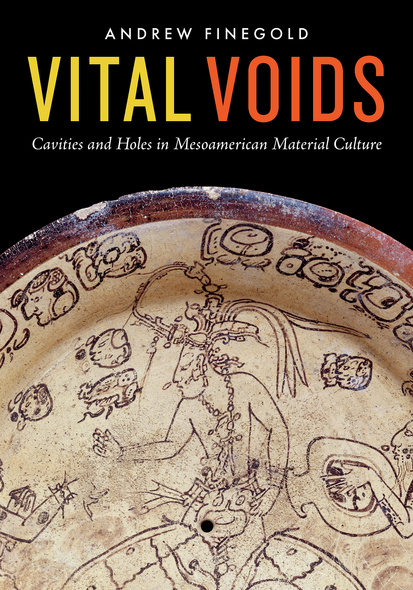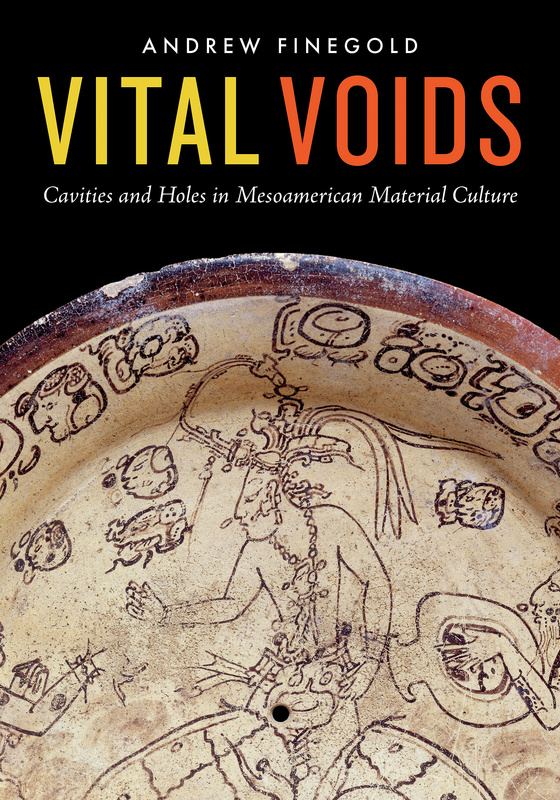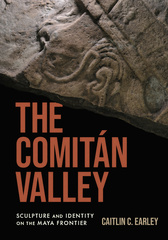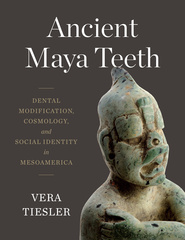Vital Voids
Cavities and Holes in Mesoamerican Material Culture
The Resurrection Plate, a Late Classic Maya dish, is decorated with an arresting scene. The Maize God, assisted by two other deities, emerges reborn from a turtle shell. At the center of the plate, in the middle of the god’s body and aligned with the point of emergence, there is a curious sight: a small, neatly drilled hole.
Art historian Andrew Finegold explores the meanings attributed to this and other holes in Mesoamerican material culture, arguing that such spaces were broadly understood as conduits of vital forces and material abundance, prerequisites for the emergence of life. Beginning with, and repeatedly returning to, the Resurrection Plate, this study explores the generative potential attributed to a wide variety of cavities and holes in Mesoamerica, ranging from the perforated dishes placed in Classic Maya burials, to caves and architectural voids, to the piercing of human flesh. Holes are also discussed in relation to fire, based on the common means through which both were produced: drilling. Ultimately, by attending to what is not there, Vital Voids offers a fascinating approach to Mesoamerican cosmology and material culture.
[Finegold] demonstrates—convincingly, and in engaging prose—that the sustained analysis of holes provides insight into the ways in which ancient Mesoamericans conceived of cavities as teeming with vital energies or pregnant with the possibility of emergence...there is a satisfying rhythm and structure to this book, which moves through an impressive array of ideas but keeps returning, almost poetically, to the place it started: a beautifully painted Late Classic Maya plate rife with meaning and replete with a small drilled hole. Finegold charts a new and productive path for thinking about voids as procreative spaces that were integral to Mesoamerican creation narratives, ritual behavior, individual identities, and expressions of social order. For this reason, this book should be of interest to readers beyond the confines of Mesoamerica who, like Finegold, see potential in a void.
[A] wonderfully illustrated book...Finegold has offered us a well-written, well-illustrated book on a topic that has received relatively little attention...Finegold manages to pierce a productive hole in our previous frame of understanding, allowing for a new and creative reinterpretation of a Mesoamerican cultural tradition and the underlying worldview.
One of the great contributions of this volume...is to provide a model for using deep object reading—integrating material, iconographic, and sociohistorical interpretations of a single ceramic dish—as a springboard into uniquely Mesoamerican philosophical systems of aesthetics, ontology, and metaphysics. Finegold’s arguments also open the door to a further consideration of voids in Mesoamerican material culture (and they are everywhere once one begins to look for them), acknowledging that his text does not and could not cover the full scope of the subject. The implications of his central thesis are far-reaching and will no doubt spark further debate and exploration by other scholars.
Andrew Finegold’s fascinating book explores the role of openings–or holes–in Mesoamerican material culture. Analyzing the meanings of voids in art and architecture, he suggests that these openings allow vital energies to move between objects and material and exist as part of rituals significant to Amerindian peoples. He demonstrates that these spaces or voids are not ‘negative’ for Mesoamerican peoples but rather are filled with energy and active forces, and therefore are an important part of ritual ideology and performance. Using an innovative combination of sources, Finegold illustrates the importance of active voids in the landscape, architecture, and art, and even in the Mesoamerican body.
Acknowledgments
Chapter 1. What’s in a Hole? Material Culture and Interpretation
Chapter 2. Perforated Vessels: Revitalizing the Discourse Surrounding “Kill Holes”
Chapter 3. Cavities in the Living Earth
Chapter 4. The Act of Drilling
Chapter 5. Perforating the Body
Chapter 6. Conclusions: Beyond the Resurrection Plate
Notes
Bibliography
Index







